Abstract
Assimilate partitioning was studied in the common pea (Pisum sativum L.) by feeding 14CO2 to whole plants and measuring radioactivity in different organs 48 hours after labeling. Two experimental protocols were used. For the first, one reproductive node was darkened with an aluminum foil, to prevent photosynthesis during labeling. The aim was to study assimilate translocation among nodes. The second was carried out to assess any priority among sinks. Whole plants were shaded, during labeling, to reduce carbon assimilation. Various developmental stages between the onset of flowering and the final stage in seed abortion of the last pod were chosen for labeling. When all photosynthetic structures at the first reproductive node were darkened at any stage of development after the formation of the first flower, the first pod was supplied with assimilates from other nodes. In contrast, later developed pods, when photosynthetic structures at their node were darkened, received assimilates from other nodes only when they were beyond their final stage in seed abortion. Reducing illumination to 30% did not change distribution of assimilated carbon between vegetative and reproductive structures, nor among pods. It appears that the relative proportion of 14C allocated to any one pod, compared to other pods, depends on the dry weight of that pod as a proportion of the total reproductive dry weight. When the plant was growing actively, following the start of the reproductive phase until a few days before the end of flowering, the top of the plant (i.e., all the organs above the last opened flower) had a higher sink strength and a higher relative specific activity than pods, suggesting that it was a more competitive sink for assimilates. The pattern of assimilate distribution described here provides an explanation for pod and seed abortion.
Full text
PDF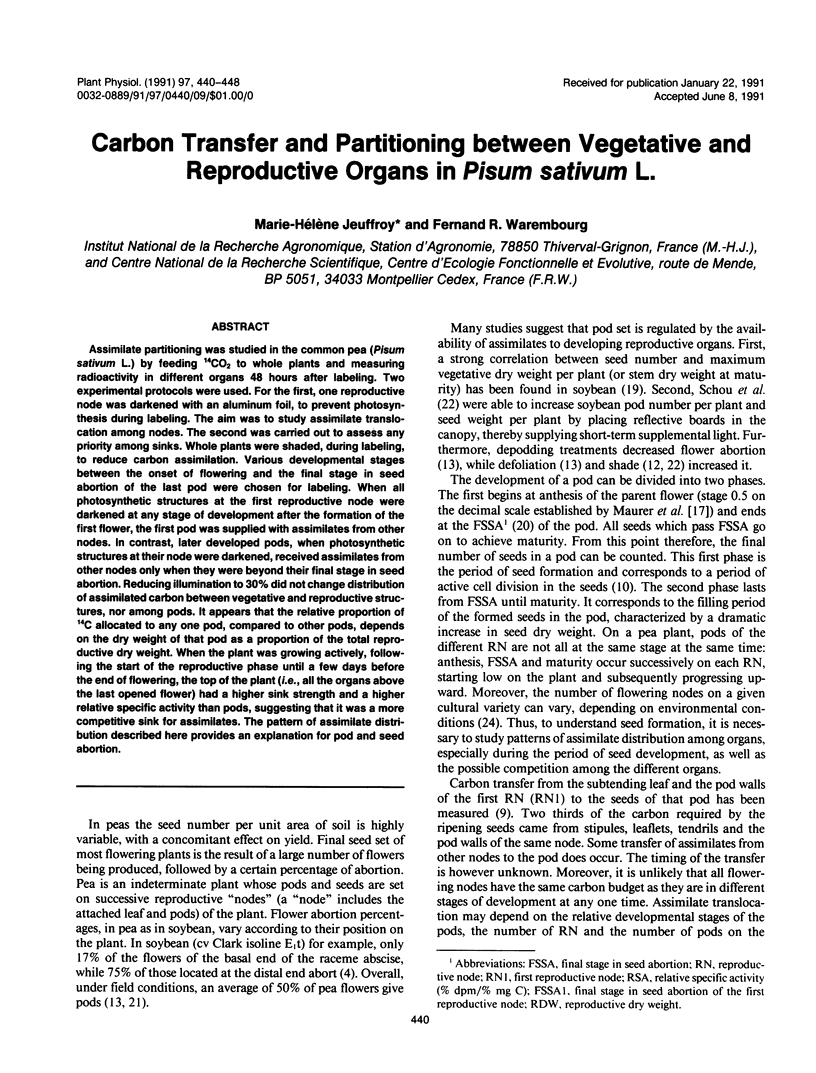

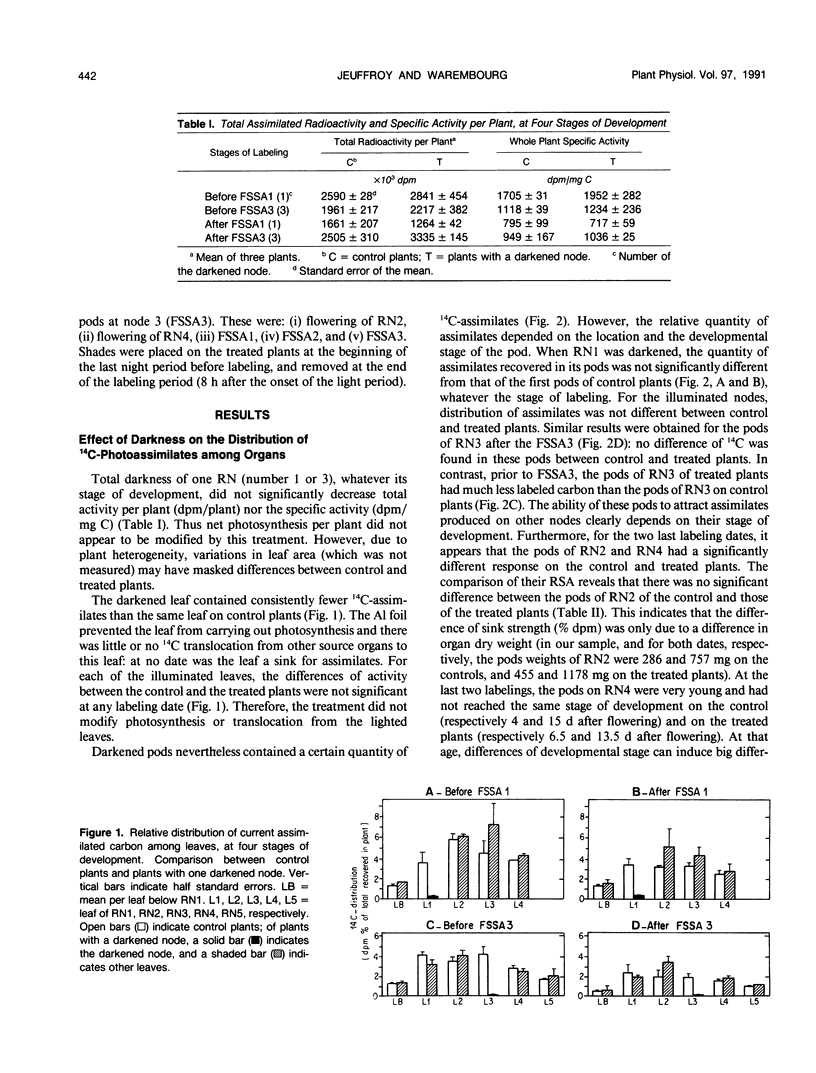
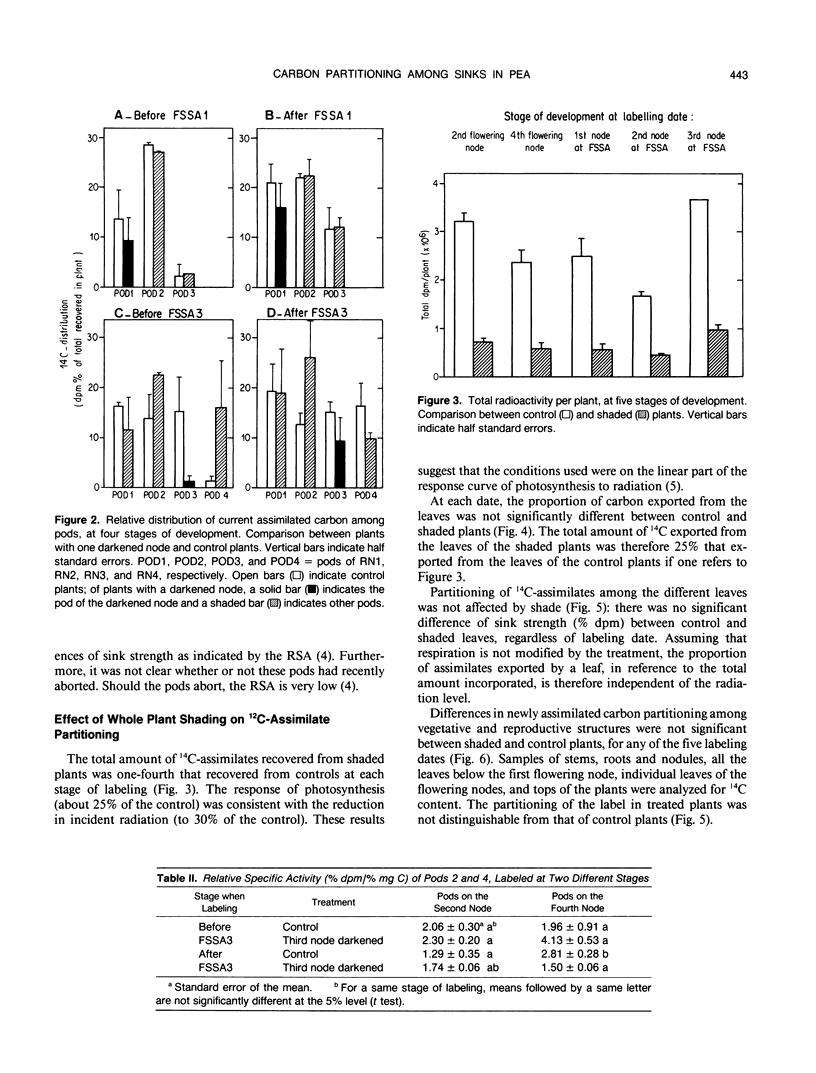
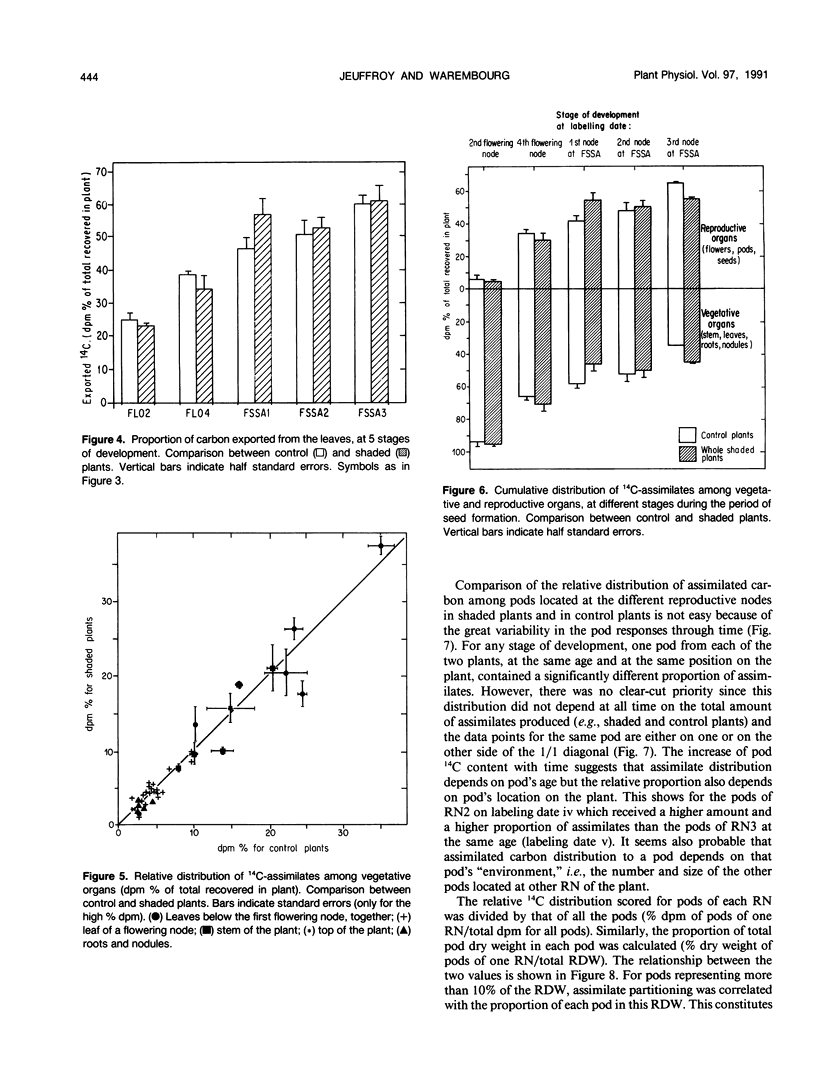
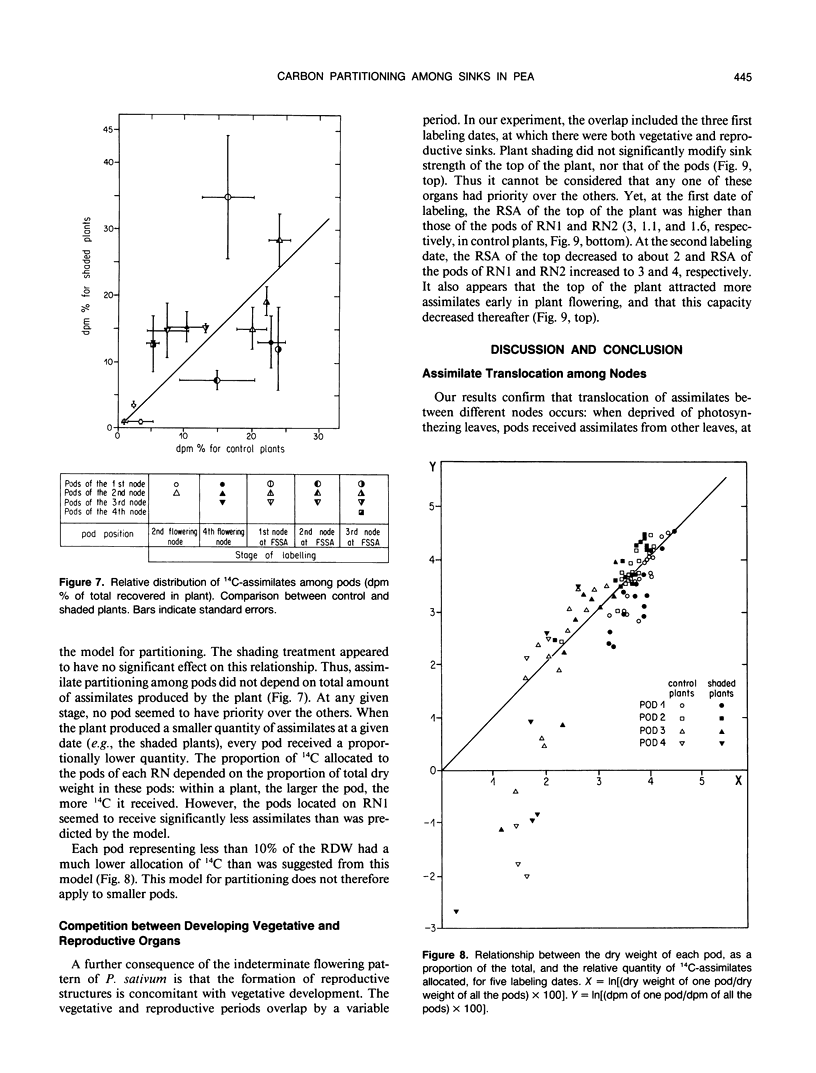
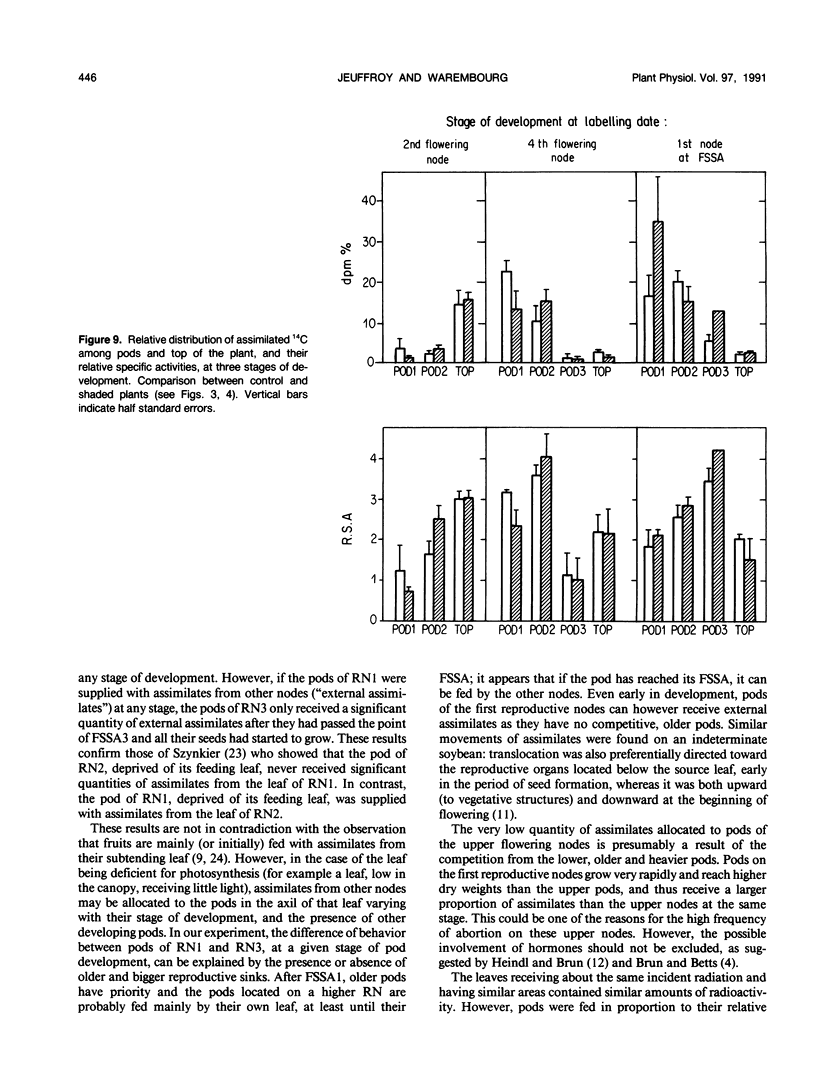
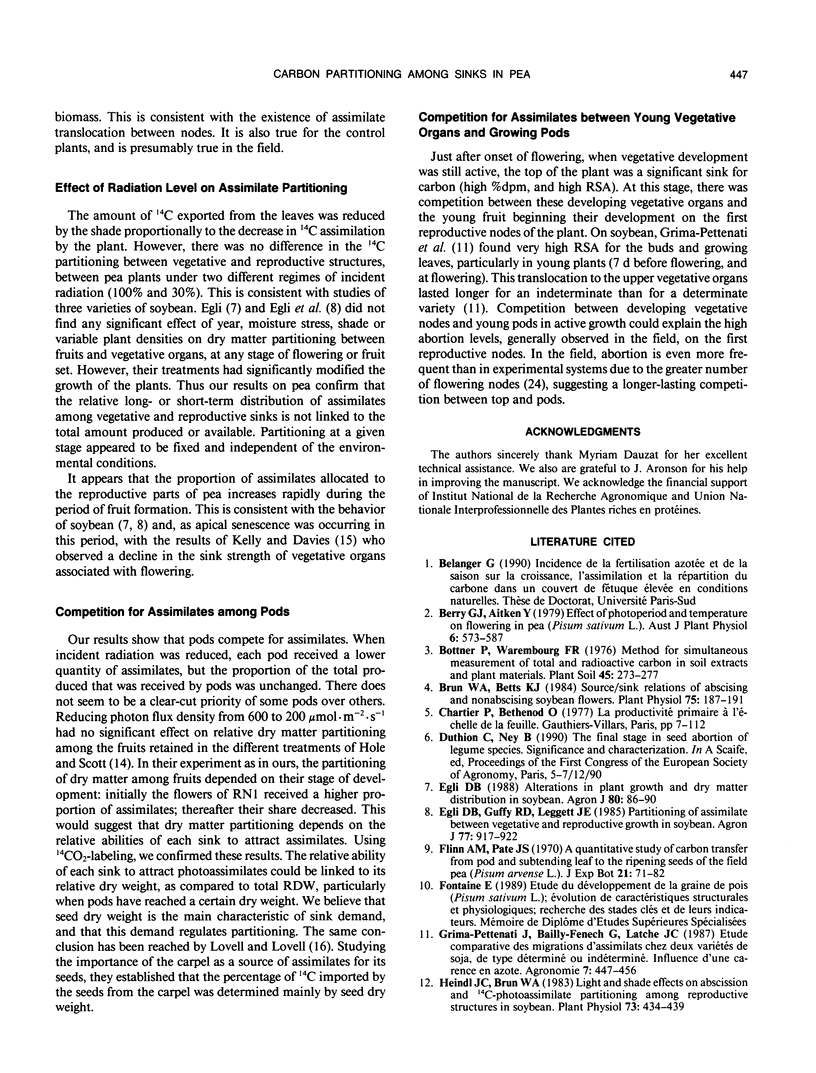
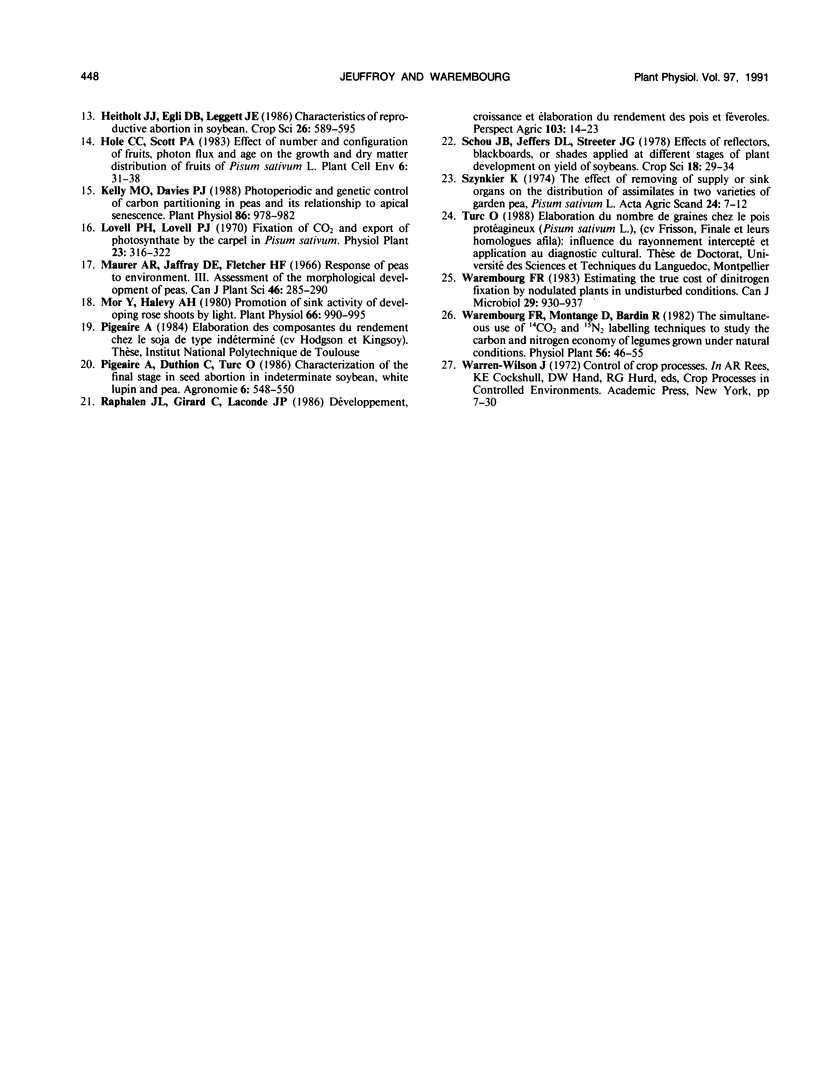
Selected References
These references are in PubMed. This may not be the complete list of references from this article.
- Brun W. A., Betts K. J. Source/Sink relations of abscising and nonabscising soybean flowers. Plant Physiol. 1984 May;75(1):187–191. doi: 10.1104/pp.75.1.187. [DOI] [PMC free article] [PubMed] [Google Scholar]
- Heindl J. C., Brun W. A. Light and Shade Effects on Abscission and C-Photoassimilate Partitioning among Reproductive Structures in Soybean. Plant Physiol. 1983 Oct;73(2):434–439. doi: 10.1104/pp.73.2.434. [DOI] [PMC free article] [PubMed] [Google Scholar]
- Kelly M. O., Davies P. J. Photoperiodic and genetic control of carbon partitioning in peas and its relationship to apical senescence. Plant Physiol. 1988 Mar;86(3):978–982. doi: 10.1104/pp.86.3.978. [DOI] [PMC free article] [PubMed] [Google Scholar]
- Mor Y., Halevy A. H. Promotion of sink activity of developing rose shoots by light. Plant Physiol. 1980 Nov;66(5):990–995. doi: 10.1104/pp.66.5.990. [DOI] [PMC free article] [PubMed] [Google Scholar]


